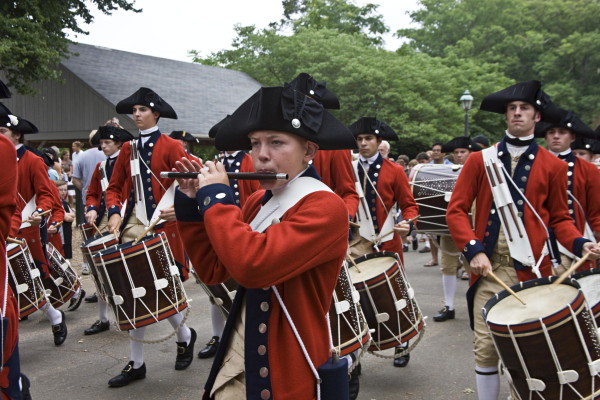
By Ben Swenson
How many 18th-century fife and drum tunes can you name? Go on, count them. Ten? Five? Two?
If you’re like most folks, you might struggle beyond “Yankee Doodle” to whistle popular Colonial music. Put yourself in early Americans’ shoes, though, and you would have been familiar with a much larger stable of standards.
The Sound of Battle
Want to know more about the music of the fifes and drums? Listen to this podcast about the physics of sound, including an experiment that allows you to hear for yourself how well the fife and drum punch through loud noise.
One such tune was “Road to Boston,” which Americans heard often during the Revolutionary War. Copped from a British tune called “Road to London, the Americanized version, which went by other names such as “March to Boston,” was a nod to all the Patriots who flocked to Boston to offer resistance to the British forces occupying the town. The tune is now the official ceremonial march of Massachusetts.
“Road to Boston” is also popular in the 21st century with recruits of the Colonial Williamsburg Fifes and Drums. “Road to Boston” is among the first tunes the blossoming musicians play as an ensemble because the level of skill required to play it matches that of most recruits. The fact that the march is so well documented in early manuscripts makes it a good choice for the Fifes and Drums’ commitment to historical and musical accuracy.
Let’s eavesdrop on recruits as they rehearse “Road to Boston.”
[brightcove videoID=4260162616001 playerID=3703125019001 height=315 width=560]
Leave a Reply